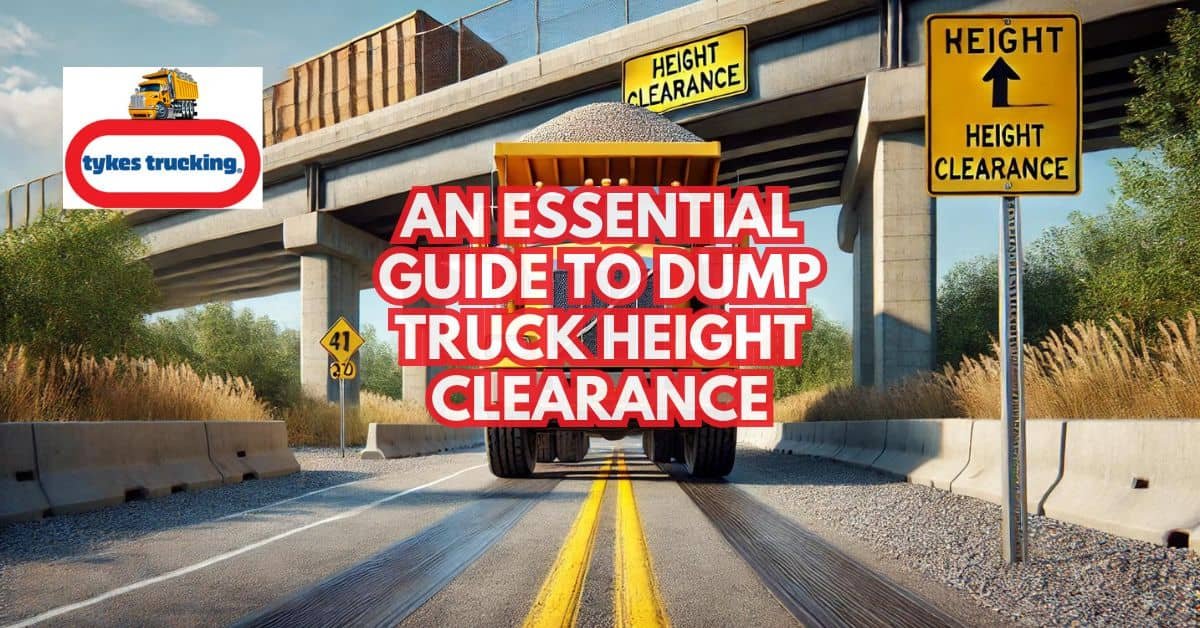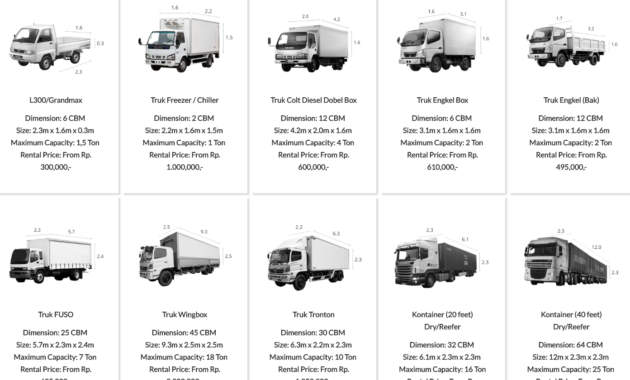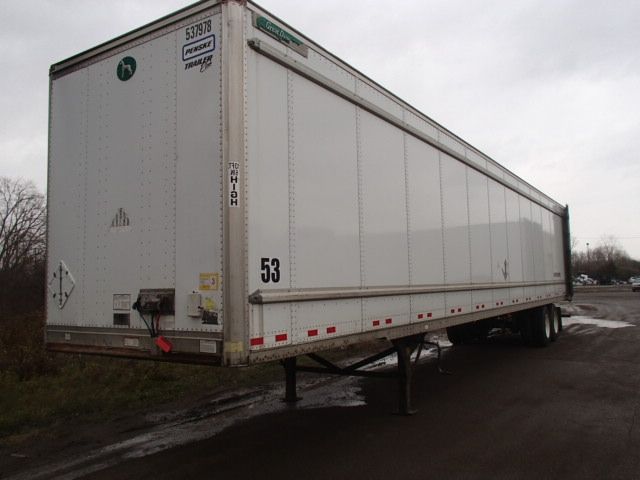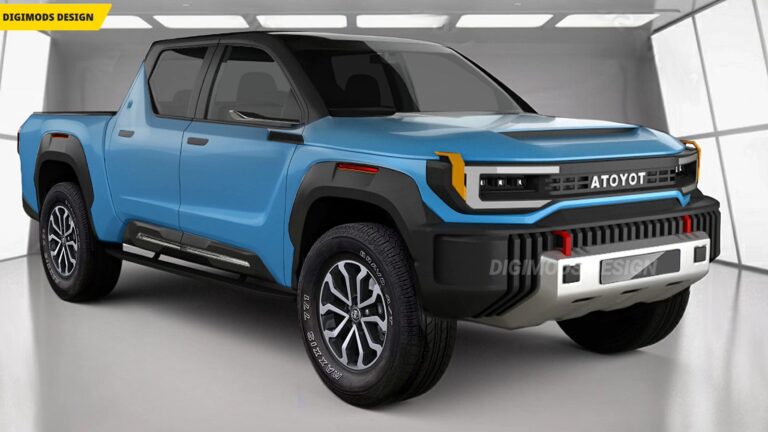What Is A Box Truck Height Clearance: A Comprehensive Guide to Safe Operation
What Is A Box Truck Height Clearance: A Comprehensive Guide to Safe Operation cars.truckstrend.com
Introduction
Operating a box truck comes with a unique set of responsibilities, and perhaps none is as critical as understanding and respecting its height clearance. Box truck height clearance refers to the maximum vertical dimension of the truck, measured from the ground to its highest point, including any rooftop equipment like air conditioning units, vents, or antennas. It is the absolute tallest point of the vehicle that must be able to pass beneath overhead obstacles without collision.
What Is A Box Truck Height Clearance: A Comprehensive Guide to Safe Operation
The importance of knowing your box truck’s height cannot be overstated. Misjudging this crucial dimension can lead to catastrophic consequences: striking bridges, damaging tunnels, getting stuck in parking garages, or tearing down overhead power lines. Such incidents not only result in costly repairs and significant delays but can also endanger lives, cause extensive infrastructure damage, and lead to serious legal and financial repercussions. This comprehensive guide will delve into every aspect of box truck height clearance, providing the knowledge and practical advice needed to ensure safe and efficient operation.
Understanding Box Truck Height Clearance
At its core, box truck height clearance is a fundamental safety parameter. Every bridge, tunnel, overpass, and even many drive-thrus and parking garages have a clearly marked maximum height. For a box truck, its clearance is the measurement that determines whether it can safely pass under these structures.
Why it matters: The consequences of miscalculating or ignoring height clearance can be severe. A "bridge strike" – where a truck collides with an overpass – is a common and dangerous occurrence. These incidents can damage the truck beyond repair, cause structural damage to the bridge (leading to closures and expensive repairs), spill cargo, and even result in fatalities. Beyond bridges, low-hanging utility lines, tree branches, and the entranceways of many commercial buildings or residential garages pose similar risks. Understanding your truck’s precise height is the first line of defense against these hazards.
Factors Affecting Height: While the basic structure of a box truck dictates much of its height, several factors can influence the final measurement:
- Truck Model and Manufacturer: Different manufacturers and models have varying standard heights.
- Tire Size and Pressure: While subtle, underinflated tires can slightly reduce height, and non-standard tire sizes can alter it.
- Suspension Type: Air ride suspensions, when properly inflated, maintain a consistent height, but worn or damaged suspension components could affect it.
- Rooftop Equipment: This is often the most overlooked factor. An HVAC unit for a refrigerated truck, a roof rack for ladders, antennas, or even emergency lights can add significant inches to the overall height, potentially pushing it over a critical limit. Always measure with all such equipment installed.

Typical Box Truck Heights and Variations
Box trucks come in various sizes, from small cargo vans to large commercial vehicles, and their heights vary accordingly. It’s crucial to understand these typical ranges, but always remember that these are general guidelines, and your specific truck’s measurement is paramount.

- Small Box Trucks (e.g., 10-14 ft U-Haul/Penske/Budget moving trucks): These often have exterior heights ranging from 10 feet to 11 feet 6 inches. They are commonly used for personal moves or small business deliveries. While smaller, they are still too tall for most residential garages and many drive-thrus.
- Medium Box Trucks (e.g., 15-22 ft commercial delivery trucks): These typically range from 11 feet 6 inches to 12 feet 6 inches in height. They are workhorses for local and regional deliveries, often seen in urban and suburban environments.
- Large Commercial Box Trucks (e.g., 24-26 ft and larger, sometimes referred to as straight trucks): These are often the tallest, with heights commonly between 12 feet 6 inches and 13 feet 6 inches. In many states, 13 feet 6 inches (13’6") is the maximum legal height for vehicles without a special permit. Trucks exceeding this limit require special routing and permits, similar to oversized loads.
- Specialized Box Trucks:

- Refrigerated (Reefer) Trucks: The refrigeration unit mounted on the roof often adds significant height, sometimes pushing them to the upper end of their size category or even slightly above the standard for a non-refrigerated truck of the same length.
- Liftgate Mechanisms: While liftgates are at the rear and primarily affect length and rear clearance, some older or custom designs might have components that affect overall height when stowed or operated.
Rental Truck Specifics: Rental companies like U-Haul, Penske, and Budget generally display the exterior height of their trucks prominently on the vehicle (often on the sun visor or inside the cab). However, these are often base measurements. If you add anything to the roof (e.g., a ladder on a roof rack), you must re-measure. Always verify the height of any rental truck you operate, even if a sticker is present, as it might not account for all variables or modifications.
How to Accurately Measure Your Box Truck’s Height
Never rely on generic specifications or what you "think" your truck’s height is. An accurate, verified measurement is non-negotiable.
Preparation:
- Level Ground: Park the truck on a flat, level surface. Uneven ground can skew your measurement.
- Proper Tire Inflation: Ensure all tires are inflated to the manufacturer’s recommended pressure. Underinflated tires can slightly reduce the overall height.
- Empty Vehicle: For the most accurate and consistent measurement, measure the truck when it is empty. While cargo inside a box truck doesn’t typically affect its height, an extremely heavy load might compress the suspension slightly, but it’s negligible for height clearance purposes. However, any items on the roof must be present during measurement.
Tools Needed:
- A long, sturdy tape measure (preferably a 25-foot or 30-foot tape).
- A step ladder or small stool (if the truck is very tall).
- A helper (highly recommended for accuracy and safety).
- A flat, straight object (e.g., a long level, a broomstick, or a straight piece of wood) if measuring alone.
Steps for Measurement:
- Identify the Highest Point: Walk around the truck and identify the absolute highest point. This is usually the roof itself, but it could be an HVAC unit, a satellite dish, an antenna, a clearance light, or a roof-mounted exhaust stack.
- Position the Helper/Tool:
- With a Helper: Have your helper hold one end of the tape measure on the ground directly below the highest point.
- Alone (using a straight object): Rest the straight object across the highest point, extending it slightly beyond the side of the truck. Use the tape measure to measure from the ground up to the underside of the straight object.
- Measure Accurately: Extend the tape measure straight up from the ground to the highest point. Ensure the tape is taut and perfectly vertical. Read the measurement carefully, noting both feet and inches.
- Verify from Multiple Angles: Take measurements from a few different points around the truck, especially if the roof isn’t perfectly flat or if there are multiple potential high points. This helps confirm consistency.
- Record and Display: Once you have the confirmed maximum height, round up to the nearest inch (e.g., if it’s 12′ 4.5", record it as 12′ 5"). Write this measurement clearly and conspicuously on a sticker or label, and affix it to the inside of the truck’s cab, ideally on the dashboard, sun visor, or door jamb, where it’s always visible to the driver.
Best Practice: Always measure your specific truck with all its regular equipment. Do not rely on manufacturer specifications alone, as aftermarket additions or even tire wear can alter the true clearance.
Navigating Low Clearance Obstacles
Knowing your truck’s height is only half the battle; the other half is applying that knowledge diligently on the road.
Pre-Trip Planning:
- Trucker GPS: Invest in a GPS unit or app specifically designed for commercial trucks. These systems allow you to input your truck’s dimensions (height, weight, length) and will then route you around roads, bridges, and tunnels with insufficient clearance. Standard car GPS systems do not offer this critical feature.
- Route Review: Even with a truck GPS, it’s wise to review your route on a map beforehand, especially if you’re traveling through unfamiliar areas. Look for known low clearances.
- Company Policies: Adhere strictly to any company policies regarding route planning and restricted areas.
On-the-Road Awareness:
- Pay Attention to Signage: This is paramount. Every low-clearance structure will have a sign indicating the maximum height. These signs are often large, yellow, and impossible to miss unless you are distracted.
- Understand Signage: Clearance signs are typically marked in feet and inches (e.g., "CLEARANCE 12 FT 6 IN"). Always compare this number to your truck’s recorded height.
- Err on the Side of Caution: If a sign reads "12 FT 6 IN" and your truck is "12 FT 5 IN," you technically have an inch to spare. However, factors like road crown, uneven pavement, or even heavy braking can slightly alter your effective height. If the margin is very tight (less than 6 inches), consider an alternate route if possible.
- Utility Lines and Tree Branches: Be mindful of overhead utility lines, especially in older neighborhoods or rural areas. While power lines are generally high, phone or cable lines can sometimes sag. Similarly, low-hanging tree branches in residential areas or unmaintained roads can cause damage.
- Parking Garages and Drive-Thrus: Most multi-story parking garages have very low clearances (often 6-8 feet). Box trucks almost never fit. Similarly, fast-food drive-thrus are designed for passenger vehicles and are typically too low.
What to Do if Unsure:
If you encounter a low-clearance situation and are unsure if you can make it, do not proceed.
- Stop Safely: Pull over to the side of the road if possible, or stop before the obstacle.
- Assess Visually: Get out of the truck and visually inspect the clearance. Sometimes, what looks too low from the driver’s seat is actually fine, or vice-versa.
- Find an Alternate Route: If there’s any doubt, or if you confirm the clearance is insufficient, find a different route. This might mean turning around, taking a detour, or calling for assistance. A few extra minutes of planning or detouring can save thousands in damages and prevent serious accidents.
Legal and Financial Implications of Height Collisions
The consequences of a height-related collision extend far beyond a damaged truck.
- Safety Risks: The immediate danger is to the driver, passengers, and other motorists. Structural failure of an overpass can lead to severe accidents, injuries, or fatalities.
- Vehicle Damage: Repairs to a box truck after a bridge strike can be extensive and extremely costly, often resulting in the truck being totaled. This leads to significant downtime, loss of revenue, and the expense of replacing the vehicle.
- Infrastructure Damage: Striking public infrastructure like bridges, tunnels, traffic signals, or utility poles can result in massive fines and civil lawsuits. The cost of repairing a damaged bridge can run into millions of dollars, and the responsible party (or their insurance) will be held liable.
- Insurance Implications: Your commercial vehicle insurance will likely cover the damage, but repeated incidents or incidents caused by gross negligence (e.g., ignoring clear signage) can lead to increased premiums, policy cancellation, or even denial of claims.
- Legal Penalties: Drivers can face citations for reckless driving, property damage, or even criminal charges depending on the severity of the incident and any injuries sustained. Commercial driver’s licenses (CDLs) can be suspended or revoked.
Tips for Safe Box Truck Operation
Operating a box truck safely requires diligence and a proactive approach.
- Always Know Your Truck’s Height: This cannot be emphasized enough. Measure it yourself and display the measurement prominently.
- Use Truck-Specific GPS: Invest in reliable navigation that accounts for truck dimensions. Update maps regularly.
- Plan Your Route in Advance: Before every trip, especially to unfamiliar areas, review your route for potential low clearances.
- Pay Attention to Signage: Be vigilant for height restriction signs on bridges, tunnels, parking garages, and even gas station canopies.
- When in Doubt, Find Another Way: If you are unsure about a clearance, stop, get out, and check. If still in doubt, or if it’s too close, find an alternate route.
- Regular Vehicle Checks: Ensure tires are properly inflated and suspension components are in good working order.
- Train Drivers: If you manage a fleet, ensure all drivers are thoroughly trained on height clearance awareness, measurement, and route planning.
- Avoid Distractions: Cell phones, food, or other distractions can cause you to miss critical warning signs. Stay focused on the road.
Box Truck Height Clearance – Quick Reference Guide
This table provides general height ranges. Always measure your specific truck.
| Truck Type/Size | Typical Exterior Height Range (Feet) | Common Uses | Key Considerations |
|---|---|---|---|
| Small Moving Van | 10′ 0" – 11′ 6" | Personal moves, local deliveries | Too tall for most residential garages/drive-thrus. Often prominently marked by rental companies. |
| Medium Delivery Truck | 11′ 6" – 12′ 6" | Commercial deliveries, furniture transport | Common for urban/suburban routes. Be cautious of older infrastructure. |
| Large Commercial Truck | 12′ 6" – 13′ 6" | Long-haul deliveries, heavy freight | Nears max legal height (13’6"). Trucker GPS essential. Very limited access to non-commercial areas. |
| Refrigerated (Reefer) | 12′ 6" – 14′ 0" (or more) | Food/perishable transport | Roof-mounted refrigeration unit adds significant height. Verify this specific measurement. |
Note: 13 feet 6 inches (13’6") is the common maximum legal height in many US states without special permits.
Frequently Asked Questions (FAQ)
Q1: Is 13’6" the standard maximum height for trucks in the U.S.?
A1: Yes, 13 feet 6 inches (13’6") is the most common maximum legal vehicle height in many states across the U.S. without requiring a special permit. However, local jurisdictions can have lower limits, especially in older cities or on specific roads. Always consult local regulations and use a truck-specific GPS.
Q2: Do all rental trucks have their height marked on them?
A2: Most reputable rental companies (like U-Haul, Penske, Budget) do place stickers with the truck’s height inside the cab, often on the sun visor or dashboard. However, these are often for the base vehicle. Always verify the measurement yourself, especially if you add any items to the roof or if the truck seems modified.
Q3: What should I do if I accidentally hit an overhead obstacle?
A3: First, ensure the safety of yourself and others. Pull over immediately if it’s safe to do so. Turn on your hazard lights. Assess any injuries. Do not attempt to move the vehicle further if it’s significantly damaged or stuck. Call emergency services (911) if there are injuries or significant damage to public property. Notify your company and insurance provider. Document the scene with photos and videos.
Q4: Can the weight of my cargo affect my box truck’s height clearance?
A4: Generally, no, not in a way that significantly impacts height clearance. A box truck’s suspension might compress slightly under a very heavy load, reducing height by a negligible amount. However, this is usually minimal and far less significant than the actual height of the truck itself. The primary concern is anything on top of the truck, such as a roof-mounted AC unit or cargo secured to a roof rack.
Q5: Are parking garages safe for box trucks?
A5: Almost never. Most multi-story parking garages have very low clearance limits, typically ranging from 6 feet to 8 feet. A standard box truck (even the smallest 10-foot rental) is significantly taller than these limits. Always check the marked clearance at the entrance of any parking garage, and assume it’s too low for a box truck unless explicitly stated otherwise with a height well above your truck’s clearance.
Conclusion
Understanding and respecting box truck height clearance is not merely a suggestion; it is a fundamental pillar of safe and responsible operation. From accurately measuring your vehicle’s tallest point to diligently planning your routes and remaining vigilant on the road, every step contributes to preventing costly accidents and ensuring the safety of everyone around you.
The few minutes spent measuring your truck, programming a truck-specific GPS, or taking a slightly longer detour to avoid a questionable overpass can save you thousands in repairs, significant legal liabilities, and potentially, lives. Prioritize safety, maintain awareness, and always know your height – it’s the smartest investment you can make in your box truck journey.






